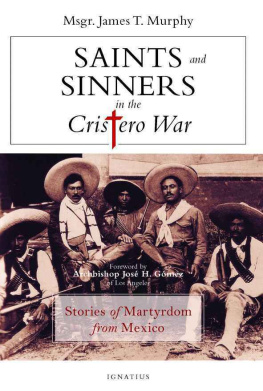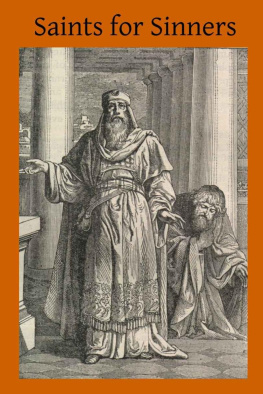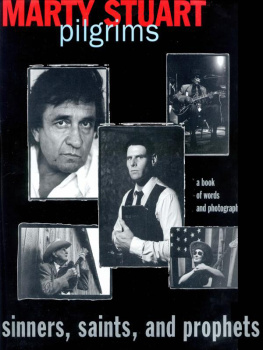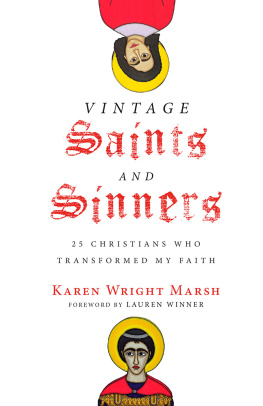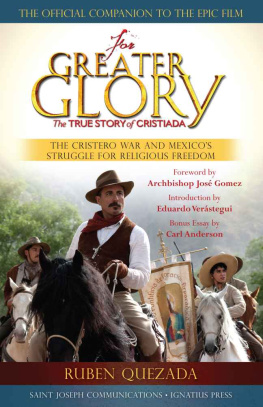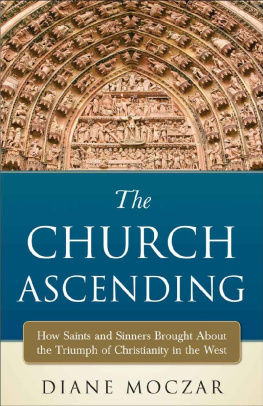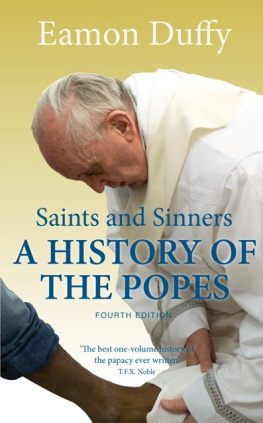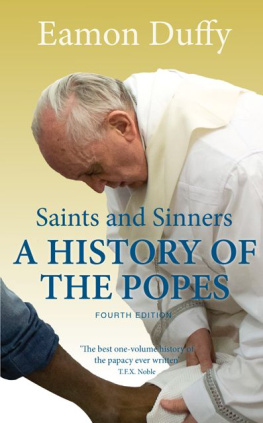Msgr James T. Murphy - Saints and sinners in the Cristero war : stories of martyrdom from Mexico
Here you can read online Msgr James T. Murphy - Saints and sinners in the Cristero war : stories of martyrdom from Mexico full text of the book (entire story) in english for free. Download pdf and epub, get meaning, cover and reviews about this ebook. year: 2019, genre: Politics. Description of the work, (preface) as well as reviews are available. Best literature library LitArk.com created for fans of good reading and offers a wide selection of genres:
Romance novel
Science fiction
Adventure
Detective
Science
History
Home and family
Prose
Art
Politics
Computer
Non-fiction
Religion
Business
Children
Humor
Choose a favorite category and find really read worthwhile books. Enjoy immersion in the world of imagination, feel the emotions of the characters or learn something new for yourself, make an fascinating discovery.
- Book:Saints and sinners in the Cristero war : stories of martyrdom from Mexico
- Author:
- Genre:
- Year:2019
- Rating:3 / 5
- Favourites:Add to favourites
- Your mark:
- 60
- 1
- 2
- 3
- 4
- 5
Saints and sinners in the Cristero war : stories of martyrdom from Mexico: summary, description and annotation
We offer to read an annotation, description, summary or preface (depends on what the author of the book "Saints and sinners in the Cristero war : stories of martyrdom from Mexico" wrote himself). If you haven't found the necessary information about the book — write in the comments, we will try to find it.
Saints and sinners in the Cristero war : stories of martyrdom from Mexico — read online for free the complete book (whole text) full work
Below is the text of the book, divided by pages. System saving the place of the last page read, allows you to conveniently read the book "Saints and sinners in the Cristero war : stories of martyrdom from Mexico" online for free, without having to search again every time where you left off. Put a bookmark, and you can go to the page where you finished reading at any time.
Font size:
Interval:
Bookmark:
SAINTS AND SINNERS IN THE
CRISTERO WAR
JAMES MURPHY
the Cristero War
Stories of Martyrdom from Mexico
IGNATIUS PRESS SAN FRANCISCO
Unless otherwise indicated, Scripture quotations are from Revised Standard Version of the BibleSecond Catholic Edition (Ignatius Edition) copyright 2006 National Council of the Churches of Christ in the United States of America. Used by permission. All rights reserved worldwide.
Front cover photograph
from the Cristero War in Mexico (19261929)
Provenance unknown
Cover design by Enrique J. Aguilar
2019 by Ignatius Press, San Francisco
All rights reserved
ISBN 978-1-62164-262-6 (PB)
ISBN 978-1-64229-065-3 (EB)
Library of Congress Control Number 2018949822
Printed in the United States of America
Historical memory is the soul of every nation.
What we choose to remember helps define who we are. How we remember where we have been in the past shapes how we understand where we are in the present and our hopes for the future. Therefore, it is important to recognize who gets to decide what we remember and how we remember itbecause these people control both the present and the future. It is said that the winner names the age. That means history is always written by those who come out on top.
However, we need to realize that the story the victors tell is sometimes not the truthbut a narrative written to serve their own purposes. For instance, in this country, what we know about Christopher Columbus and Spanish missionaries like Saint Junipero Serra has been deeply colored by la legenda negra (the black legend) which was anti-Hispanic propaganda invented by the colonial British and later mainstreamed by the Ku Klux Klan and anti-Catholic nativists for the 1920s. As Monsignor James Murphy points out in this fine book, the KKK was among the many elites in this country who lent support to the brutal anti-Catholic persecutions in Mexico in the 1920s.
This period in the history of the United States and Mexico is now largely forgotten in both countries. It is hardly mentioned in many contemporary histories of Mexico and Latin America. Even Mexicos renowned public intellectuals and men of letters, Carlos Fuentes and Octavio Paz, have never had much to say about this dark stain on Mexicos conscience. Yet the history of the Americas has never witnessed persecution on such an epic scale as that waged against the Catholic Church in the years after the Mexican Revolution.
The post-revolutionary regime adopted a constitution in 1917 that outlawed the public practice of the Catholic faith. The decade that followed was a reign of terrorpriests were killed at the altar and strung from poles along the highways; and believers were tortured and killed in the most horrible ways. Hundreds of thousands fled across the border seeking refuge and were welcomed by the Church in Los Angeles and elsewhere throughout the United States. This was a time of martyrs and saints and countless hidden heroes for the faith.
I learned the names of these heroes as a young boy growing up in Monterrey, just a generation after the persecutionBlessed Miguel Pro may be the only martyr in the history of the Church whose execution was photographed; Saint Jos Sanchez del Rio, the child-martyr; Blessed Salvador Huerta Gutierrez, the only auto mechanic in the communion of saints; Saint Toribio Romo Gonzalez, the martyred priest who has become the patron of immigrants and refugees from Mexico; and Servant of God Mara de la Luz Camacho, the beautiful catechist who gave her life to prevent her church from being desecrated.
When I became an archbishop, first in San Antonio and later in Los Angeles, I began to see firsthand how the faith of the Church in this country has been shaped by the witness of the many refugees from the persecution. I learned the name of Saint Rafael Guizar Valencia, a bishop who ran a clandestine seminary in Mexico during the early years of the persecution. Later he was driven into exile, and he even spent some time preaching and teaching in San Antonio, Texas. I was always humbled to know that this heroic priest once preached in the same pulpit in which I used to preach in every Sunday at San Fernando Cathedral.
In Los Angeles, I learned of Venerable Mother Luisita, Mara Luisa de la Pehay Navarro, who founded one of the most vital religious orders here, the Carmelite Sisters of the Most Sacred Heart of Los Angeles. The litany of Mexican saints and martyrs is long, and we should know their names and their stories and the history of the times in which they lived. Monsignor Murphy tells this story well. His chapter on Miguel Pro should be required reading in every seminary.
These stories matter. We are living in a secular age and a globalized society that more and more functions with indifference or hostility toward religion. We need to remember that proclaiming Jesus Christ can lead to violence and persecution. This was true in the time of the apostles, it was true in Mexico in the 1920s, and it is true today. We should never forget that today, all across the world, Christians are still suffering and dying for Jesus.
In our time, the Church in the United States knows the soft persecution of those who would deny us our rights to live our faith in freedom. Increasingly, we face pressures to compromise and abandon our beliefs as the price for living in our society. It is especially in these times that we need to recover these lost stories of our recent history. We should be grateful to Monsignor Murphy for making this possible.
These stories are important because they remind us that there has always been a strong spiritual bond between the Church in Mexico and the United States. In fact, it was Hispanic missionaries from Mexico who first evangelized this country, and our country continues to be renewed by the spiritual contributions of men and women from Mexico and Latin America.
We need to remember this history and especially the saintsknown and unknownwho laid down their lives to keep the Christian faith alive in many dark and faithless times. Because of their witness and courage, this beautiful faith, the truth of the living God, has been handed on to us.
In this way, may the blood of the martyrs continue to be the seed of the Church of the Americas.
Most Reverend Jos H. Gomez
Archbishop of Los Angeles
July 1, 2018
Memorial of Saint Junipero Serra
In the late 1920s, a violent conflict over religious freedom broke out in Mexico between a large segment of the Catholic population and the government of President Plutarco Elias Calles. Called the Cristero War or Cristero Rebellion, also known as La Cristiada , the conflict began as a spontaneous rebellion by ragtag bands of rural Catholics whose machetes and homemade slings were no match for the armed forces of the Mexican Republic. It was a minor disturbance that the army should have crushed in a matter of days, but it didnt. The conflict went on for three years, and by the time it ended, the Mexican army had lost twelve generals, seventy colonels, and eighteen hundred officers. Over two hundred thousand people, combatants and civilians alike, were killed, and many more fled the country. It was during this time that significant numbers of immigrants from Mexico began coming to the United States.
Surprisingly little is known in Mexico about this religious conflict because for decades following the war the subject was too sensitive to teach in schools or to talk about in public discourse. There was a kind of conspiracy of silence both in the Church and the state, as Mexicans lived under what one Vatican official called the most anti-Catholic constitution on the planet. Surprisingly little is known about it on this side of the border either, despite the critical involvement of American Catholics in the crisis at the time. The Archdiocese of San Antonio, for example, had to host practically all of the Mexican bishops (who had been exiled) for several years during that period, and the Knights of Columbus provided financial assistance for the hundreds of priests, nuns, and laity who were fleeing the persecution. It was pressure from the American Catholic community that eventually caused President Calvin Coolidge to pay more attention to the crisis, and it was his ambassador to Mexico who eventually brokered an end to the conflict.
Next pageFont size:
Interval:
Bookmark:
Similar books «Saints and sinners in the Cristero war : stories of martyrdom from Mexico»
Look at similar books to Saints and sinners in the Cristero war : stories of martyrdom from Mexico. We have selected literature similar in name and meaning in the hope of providing readers with more options to find new, interesting, not yet read works.
Discussion, reviews of the book Saints and sinners in the Cristero war : stories of martyrdom from Mexico and just readers' own opinions. Leave your comments, write what you think about the work, its meaning or the main characters. Specify what exactly you liked and what you didn't like, and why you think so.

